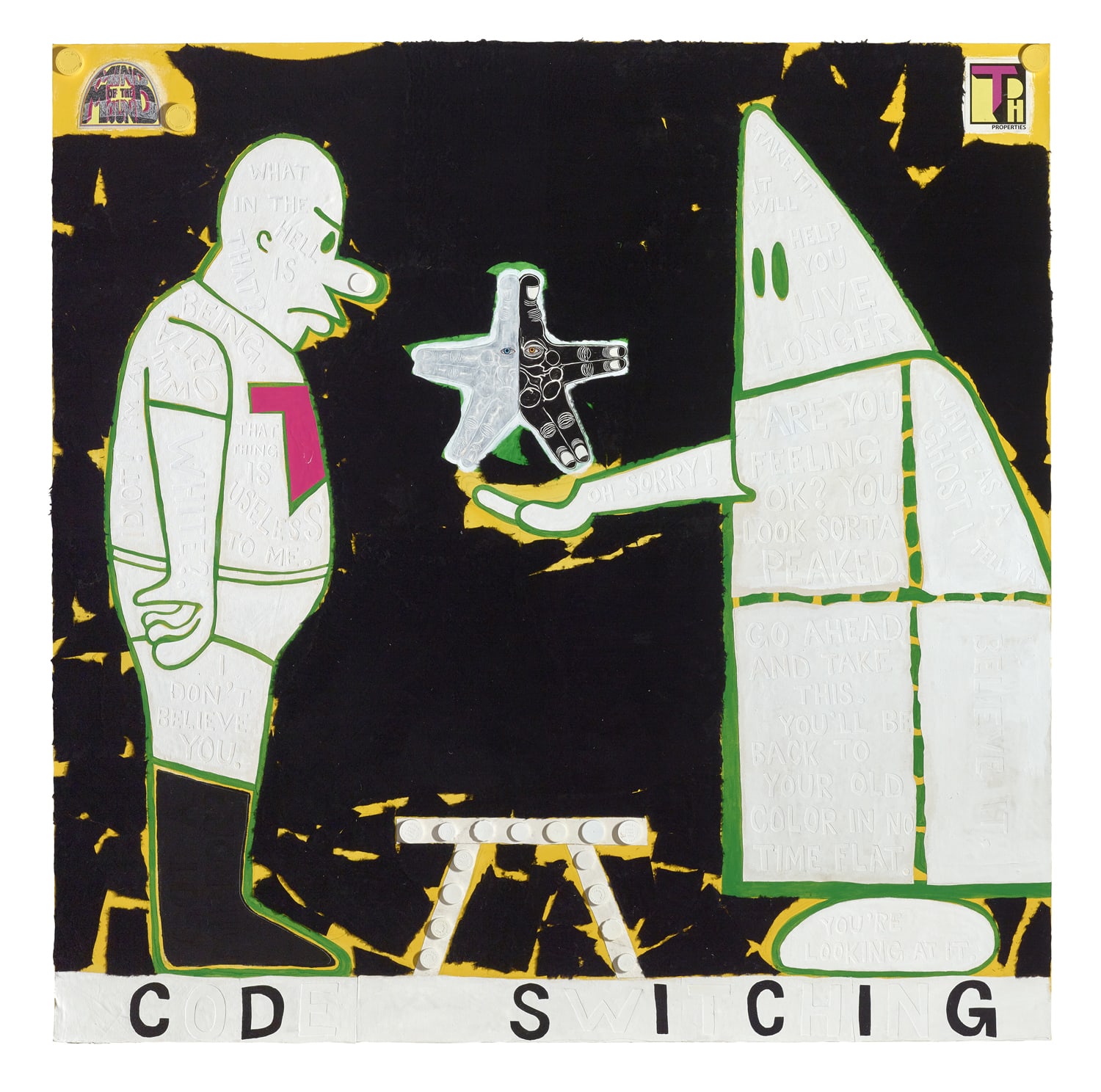-
Artworks



Step and Screw: The Star of Code Switching, 2020
Acrylic, graphite, plastic tops, and paper collage on canvas84 x 84 in.
213.4 x 213.4 cmSoldFurther images
In 'Step and Screw: The Star of Code Switching,' Hancock imagines a meeting between his alter-ego Torpedo Boy, a black superhero, and one of the buffoonish Klansmen who populated Philip...In "Step and Screw: The Star of Code Switching," Hancock imagines a meeting between his alter-ego Torpedo Boy, a black superhero, and one of the buffoonish Klansmen who populated Philip Guston’s paintings. Hancock prizes the ambiguity and the mutability of this moment, and has returned to it again and again. As he notes: “The more you dissect the image, the more it becomes fraught with historic tension and with my own history as a painter. It keeps feeding itself as an image. The item that is exchanged between them changes the narrative each time.”
In this work, the Klansman hands a lily-white Torpedo Boy a sentient, heterochromiac starfish of Black and white fingers. Text embedded within Hancock’s painting both drives the narrative and acts as a central visual component. Here, the verbal exchange between—as well as the interior thoughts of—the central figures of Torpedo Boy and the Klansman are collaged within the outlines of their respective bodies. The hooded figure implores the “white as a ghost” hero to take the proffered object, promising that “it will help you live longer” and that “you’ll be back to your old color in no time flat.”






